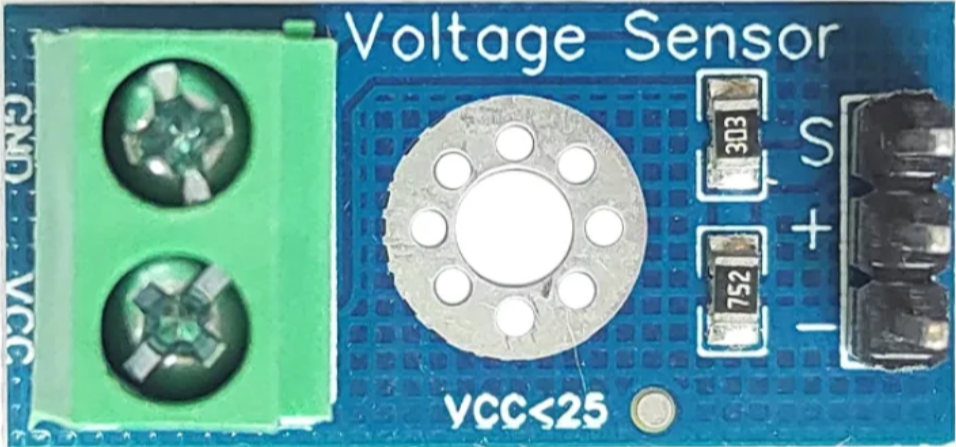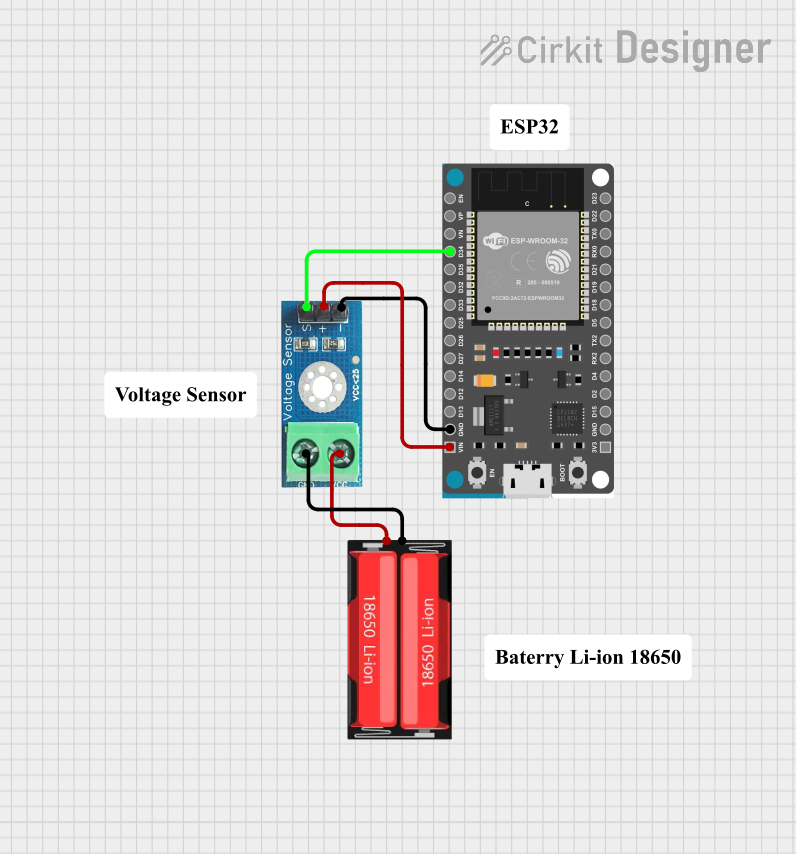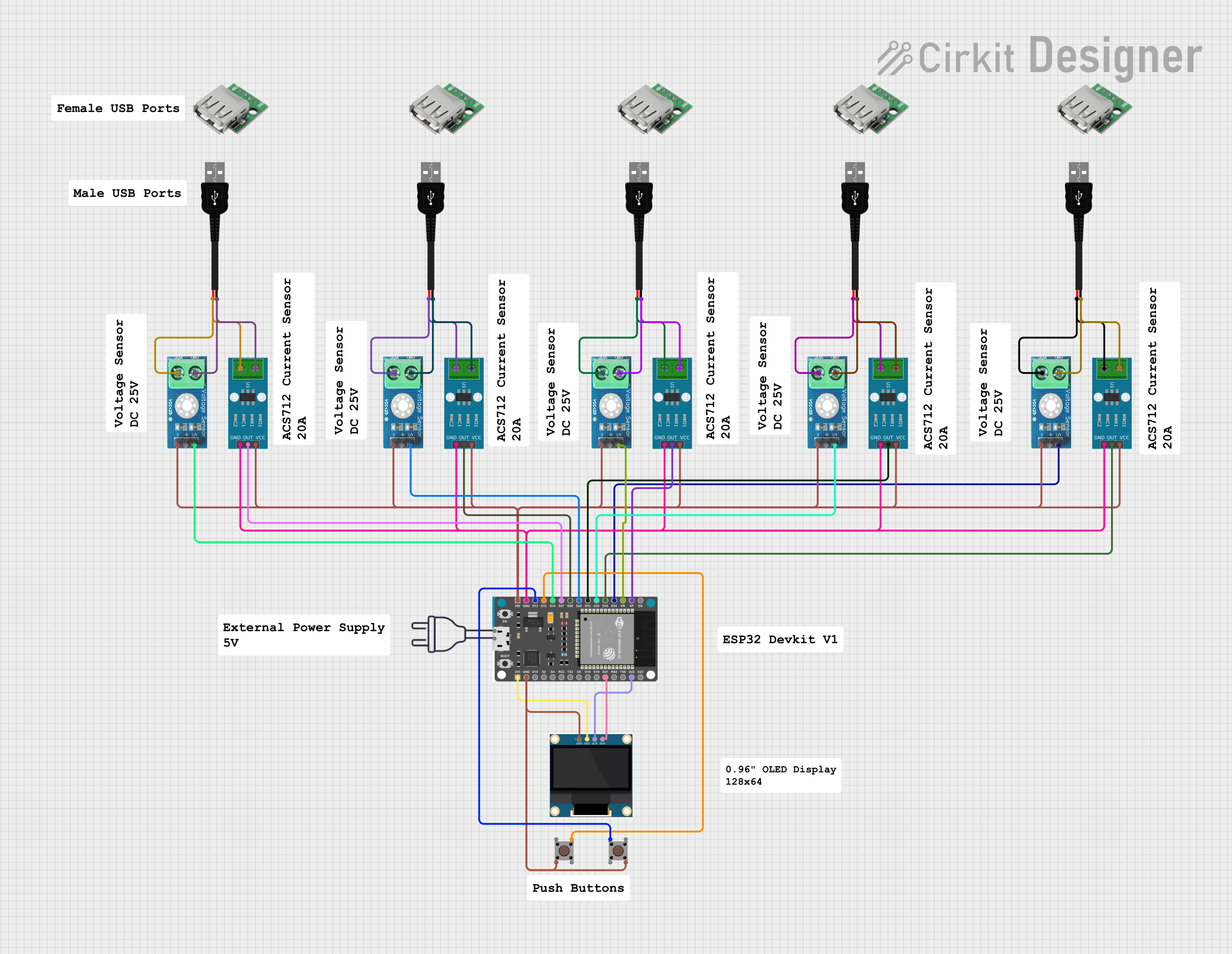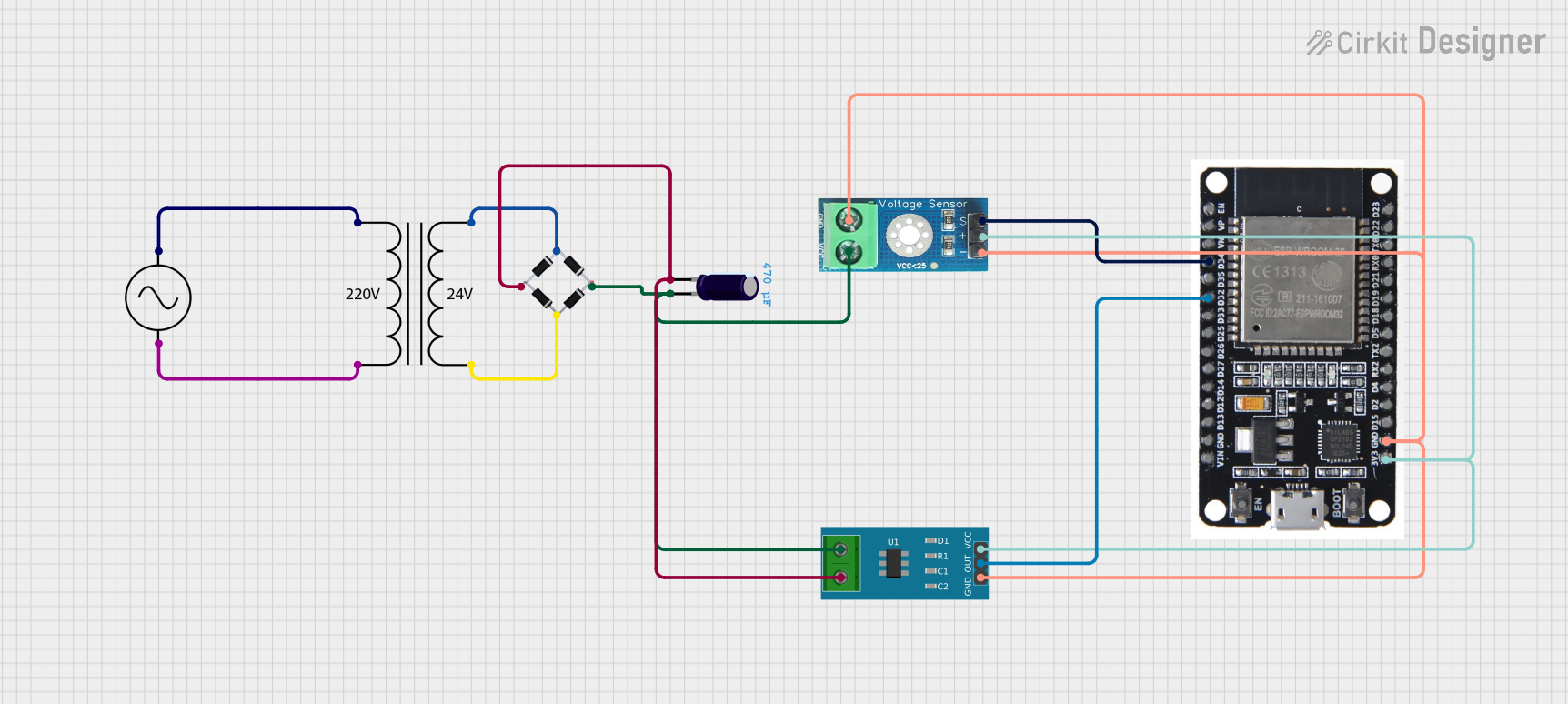
How to Use Voltage Sensor DC 25V: Examples, Pinouts, and Specs

 Design with Voltage Sensor DC 25V in Cirkit Designer
Design with Voltage Sensor DC 25V in Cirkit DesignerIntroduction
The Voltage Sensor DC 25V is a device designed to measure the voltage level in a DC circuit, with a maximum input voltage of 25 volts. It provides real-time feedback, making it an essential tool for monitoring and control applications. This sensor is widely used in battery monitoring systems, power supply diagnostics, and embedded systems where voltage measurement is critical.
Explore Projects Built with Voltage Sensor DC 25V

 Open Project in Cirkit Designer
Open Project in Cirkit Designer
 Open Project in Cirkit Designer
Open Project in Cirkit Designer
 Open Project in Cirkit Designer
Open Project in Cirkit Designer
 Open Project in Cirkit Designer
Open Project in Cirkit DesignerExplore Projects Built with Voltage Sensor DC 25V

 Open Project in Cirkit Designer
Open Project in Cirkit Designer
 Open Project in Cirkit Designer
Open Project in Cirkit Designer
 Open Project in Cirkit Designer
Open Project in Cirkit Designer
 Open Project in Cirkit Designer
Open Project in Cirkit DesignerCommon Applications and Use Cases
- Battery voltage monitoring in renewable energy systems
- Power supply diagnostics in electronic circuits
- Voltage measurement in Arduino and other microcontroller-based projects
- Real-time voltage feedback for automation and control systems
Technical Specifications
The Voltage Sensor DC 25V is a compact and efficient module with the following key specifications:
| Parameter | Value |
|---|---|
| Input Voltage Range | 0 - 25V DC |
| Output Voltage Range | 0 - 5V DC (scaled output) |
| Voltage Divider Ratio | 5:1 |
| Accuracy | ±1% |
| Operating Current | < 10mA |
| Operating Temperature | -40°C to +85°C |
| Dimensions | 30mm x 15mm x 10mm |
Pin Configuration and Descriptions
The Voltage Sensor DC 25V typically has a 3-pin interface:
| Pin | Name | Description |
|---|---|---|
| 1 | VCC | Power supply input (typically 3.3V or 5V) |
| 2 | GND | Ground connection |
| 3 | OUT | Analog output voltage proportional to input voltage |
Usage Instructions
How to Use the Component in a Circuit
- Power the Sensor: Connect the
VCCpin to a 3.3V or 5V power source and theGNDpin to the ground of your circuit. - Connect the Voltage Source: Attach the positive terminal of the voltage source to the sensor's input terminal (marked as
VIN+) and the negative terminal to the ground (VIN-). - Read the Output: The
OUTpin provides an analog voltage proportional to the input voltage. This output can be read using an analog-to-digital converter (ADC) on a microcontroller, such as an Arduino.
Important Considerations and Best Practices
- Voltage Range: Ensure the input voltage does not exceed 25V DC to avoid damaging the sensor.
- Scaling Factor: The sensor uses a 5:1 voltage divider, meaning the output voltage is scaled down by a factor of 5. For example, an input voltage of 25V will produce an output of 5V.
- Calibration: For precise measurements, calibrate the sensor by comparing its output with a known reference voltage.
- Noise Reduction: Use decoupling capacitors near the sensor to minimize noise in the output signal.
Example: Using the Voltage Sensor with Arduino UNO
Below is an example code snippet to read the voltage using an Arduino UNO:
// Define the analog pin connected to the sensor's OUT pin
const int sensorPin = A0;
// Define the voltage divider ratio (5:1)
const float voltageDividerRatio = 5.0;
// Define the reference voltage of the Arduino (typically 5V)
const float referenceVoltage = 5.0;
void setup() {
// Initialize serial communication for debugging
Serial.begin(9600);
}
void loop() {
// Read the analog value from the sensor
int sensorValue = analogRead(sensorPin);
// Convert the analog value to a voltage
float outputVoltage = (sensorValue / 1023.0) * referenceVoltage;
// Calculate the input voltage using the voltage divider ratio
float inputVoltage = outputVoltage * voltageDividerRatio;
// Print the input voltage to the Serial Monitor
Serial.print("Input Voltage: ");
Serial.print(inputVoltage);
Serial.println(" V");
// Add a delay for readability
delay(1000);
}
Troubleshooting and FAQs
Common Issues and Solutions
No Output Voltage:
- Cause: Incorrect wiring or loose connections.
- Solution: Double-check all connections, ensuring the
VCCandGNDpins are properly connected.
Inaccurate Voltage Readings:
- Cause: Calibration error or noise in the circuit.
- Solution: Calibrate the sensor using a known reference voltage and add decoupling capacitors to reduce noise.
Sensor Overheating:
- Cause: Input voltage exceeds 25V.
- Solution: Ensure the input voltage is within the specified range.
Arduino Reads Zero Voltage:
- Cause: Incorrect analog pin configuration or damaged sensor.
- Solution: Verify the analog pin setup in the code and test the sensor with a multimeter.
FAQs
Q1: Can this sensor measure AC voltage?
A1: No, the Voltage Sensor DC 25V is designed for DC voltage measurement only.
Q2: What happens if the input voltage exceeds 25V?
A2: Exceeding 25V may damage the sensor permanently. Use a higher-rated voltage sensor for such applications.
Q3: Can I use this sensor with a 3.3V microcontroller?
A3: Yes, the sensor is compatible with 3.3V systems, but ensure the output voltage does not exceed the ADC input range of your microcontroller.
Q4: How do I improve measurement accuracy?
A4: Use a stable power supply, calibrate the sensor, and minimize noise in the circuit.
This documentation provides a comprehensive guide to using the Voltage Sensor DC 25V effectively in your projects.